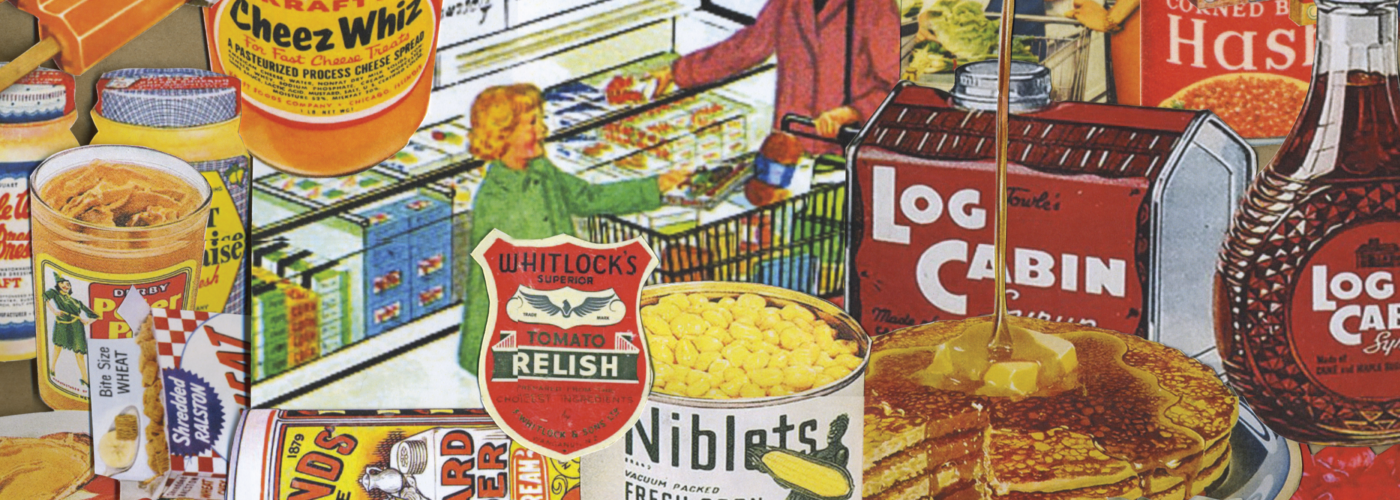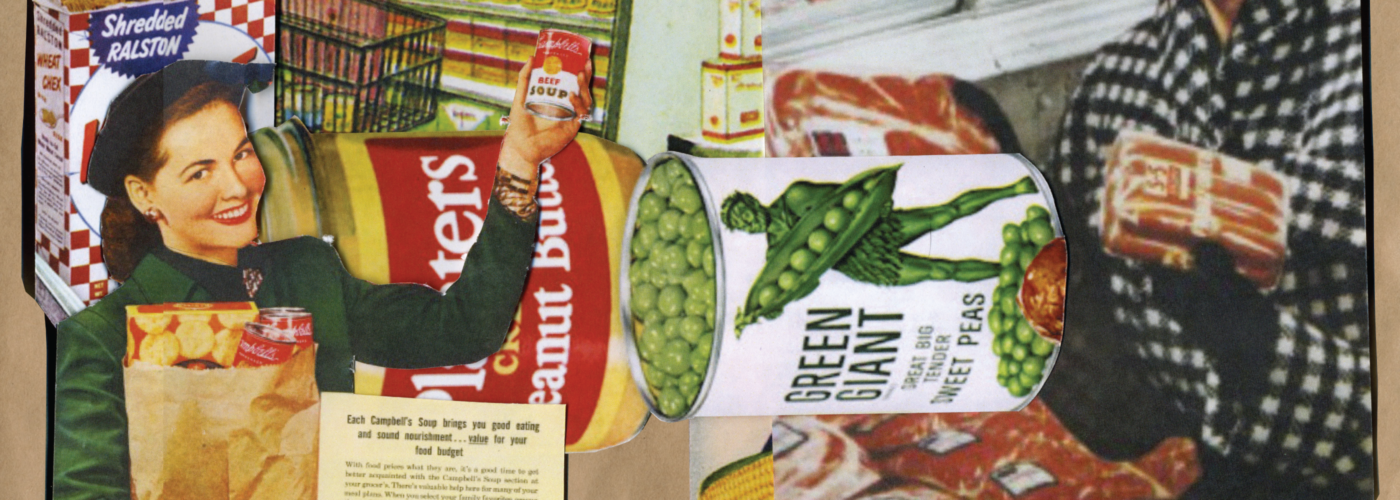Resources
How to get your CPG food product Retail Ready
Wholesale vs Direct-to-Consumer, the Importance of Branding and Common Scaling Mistakes
Imagine you make an amazing chocolate bar. Maybe the best chocolate bar that most people will ever have. You’re able to sell it for $35 a bar at your local farmers’ market and always leave completely sold out. You’ve been doing this as a part time thing but want to go pro. What’s your next move? Start selling to local grocery stores? Maybe an Amazon store? Or maybe launch a direct-to-consumer eCommerce site? Or should you go all in and shoot for landing in Whole Foods? All of these options require careful planning. And if not handled correctly, you can just as easily scuttle your entire enterprise.
We’ve seen artisan consumer packaged goods (CPG) companies struggle to make the leap and scale. It’s not just dialing in your branding—this requires establishing systems for quality control, making sure your cost of goods sold (COGS) allow for margin with new partners in the mix, making sure your price is set correctly and making sure you can scale up production quickly in the event that you’ve unknowingly strapped yourself to a rocket ship.
Whenever we work with food artisans who are eyeing growth, we suggest they work with a consultant to ensure that process is managed correctly. Because what good is world class branding if your company is consistently losing money? The consultant we always recommend is Alli Ball. We first met Alli several years ago when she reached out to CODO to discuss branding for her own personal beverage startup concept (a project she mentions later in this conversation).
We were impressed with her consulting practice and find everything Alli preaches to be practical and actionable. So we’re happy to bring Alli in for a long overdue conversation on what CPG food and beverage companies need to do to ensure they scale profitably.


Kicking off, please introduce yourself—what’s your background, and what lead you to found Food Biz Wiz and Retail Ready?
 Alli
Alli
Hey, I’m Alli, the Founder of Food Biz Wiz® and creator of Retail Ready®. I’m a former Grocery Buyer, Head of Grocery and Retail Store Manager who left corporate to become a Wholesale Consultant, helping emerging food & beverage brands understand how to get on grocery shelves (whether that’s a brick & mortar shelf, or a digital shelf!) and how to have high sales once you do.
I left my role at Bi-Rite Market in San Francisco about 6.5 years ago to start consulting because I saw so many fantastic products—delicious, values-driven brands—fail on the retail shelf because they didn’t know how to navigate the complicated world of grocery. I knew I could be the person to peel back that curtain through my online course, Retail Ready®.

What food and bev vertical excites you the most right now? Where are you seeing the most movement?
 Alli
Alli
I’m fortunate to see the trends before they hit mainstream grocery shelves, and am really excited by functional foods, and the ability to heal through natural ingredients. I love seeing adaptogens becoming popular in beverages, snacks, and supplements. I swear that taking ½ tsp of dried mushrooms daily has helped me navigate 2020! We’re also obviously continuing to see success with CBD products, and a ton of traction with non-alcoholic drink options—I think the three categories are all growing as a results of each other.

What are some common mistakes you see food artisans make as they attempt to scale?
 Alli
Alli
I could list over a dozen, but I’ll keep in succinct for your readers:
- Thinking that “everyone” is your target audience, and not speaking narrowly enough to your core consumer.
- Not understanding your financials. It’s heartbreaking to realize, 3 years into your business, that you’ve just created a really expensive hobby.
- Not investing in your business. I get it—brands are bootstrapped, and VC funding isn’t the norm in food & beverage—but you’ll save tens (or even hundreds!) of thousands of dollars if you invest in professional branding, financial consulting, and a wholesale strategy. The brands that I’ve worked with who find a way to invest in building a brand—not just a product line—are the ones who succeed.

Wholesale and direct-to-consumer are two different animals. Can you walk us through some of the similarities between them as well as some of the important differences?
 Alli
Alli
Absolutely. When I say “wholesale” I’m specifically referring to the act of selling your product—at wholesale cost (so below the typical “price”)—to someone who is going to resell it to the end-user. This could be a grocery store that sells your box of cereal, a bar who put your beer on tap, a website like Thrive Market who sells your olive oil to consumers, or a nursing home who uses your granola in their breakfast bar. These are all wholesale accounts.
Direct-to-consumer sales are just that—when you’re selling your products directly to the end-user. This could be in a retail setting, like selling your own beer in your own bar. Or selling your baked items directly to consumers at the farmer’s market, or selling your coffee beans through your own website.
In both channels, you need to create a brand that solves a problem for the consumer, that sparks an emotional connection with that shopper, and that is the right product, at the right price point, for that user.
The biggest difference between the channels is volume, and pricing. When you sell DTC you keep more of the margin yourself—after all, you aren’t paying for a broker, distributor, or selling at that wholesale price. “Why would you ever want to do wholesale then,” you might ask? Well, it comes down to volume. You’ll typically sell much more if you have your product in dozens or hundreds of wholesale accounts than you can manage direct-to-consumer, and the volume makes up for the lower margin.
I think it’s really easy to look at flashy brands on Instagram and believe it’s easy to launch a DTC brand, gaining high sales through eCommerce, but when we look at the actual numbers it’s much more challenging than you originally thought: it’s difficult to drive traffic to your own website, requires a very robust and expensive digital marketing strategy, and requires that the shopper change their behavior and shop DTC online (I’ll ask you: when was the last time that YOU bought hummus directly from the producer’s website?). The rise of eCommerce this year has been incredible, but the stats still show that most of that growth is with online retailers where you can build a full shopping basket—not on individual food & beverage brands’ websites.

Build a stronger brand.
Sell more beer.
Join 7,500+ other beer industry folks and sign up for our monthly Beer Branding Trends Newsletter.

Beer Branding Trends 2.0

What role does branding play in scaling a food and beverage CPG company?
 Alli
Alli
It’s a pillar that is essential for success. Frankly, it’s relatively easy to create a delicious food product, but it’s your branding that is going to set you apart from the competition. If you don’t invest in building a brand, you’re just another cookie company.

If you could prioritize 3 things for a new food startup to focus on as they prepare to launch, what would they be?
 Alli
Alli
This is such a great question!
- Market research. Make sure that you’re creating a product that people actually want to buy (and no, don’t ask your friends & family).
- Understanding the food & beverage industry. We’re a complicated industry, and it’s hard to break into if you don’t have connections. Listen to podcasts, join online groups, and hire experts to help guide you through the first few years. A few years ago I heard the phrase “if it doesn’t work on paper, it doesn’t work in reality,” and I now repeat that to my Retail Ready® students. Invest in getting crystal clear that your biz idea works on paper before you launch into product development.
- Strategic Branding! You probably guessed I was going to say that, but I can’t emphasize it enough. Buying a logo on Fiverr is not enough.

Are there any differences between brick and mortar vs eCommerce when it comes to branding and positioning?
 Alli
Alli
Yes, absolutely, and it’s important to think about this as a young brand. Where are you going to focus first? Your packaging’s visual & structural design might change if you’re selling online vs. brick and mortar (for example – you might choose to stick with recyclable plastic over a glass jar if you know you’ll be shipping cross country!), your case size might be different if you’re selling online (selling in a 3 pack is much more popular online than in-store), and countless other smaller decisions have an impact on your success depending on where you’ll sell.
I also think it’s much easier to sell a food or beverage product through eCommerce who positions themselves as solving a health or dietary problem than it is to sell an everyday staple DTC online. For example, if you make a chocolate bar that just happens to be low sugar & high fiber—you might strategically position yourself as a bar for keto dieters, knowing those health-focused search terms might have less competition than “dark chocolate bar.” Same bar, just different positioning.

Do you view pricing as an element of positioning (e.g. charging obscenely high prices for an item to achieve luxury positioning), or as more of a utilitarian thing where you’re factoring in COGs and trying to leave as much profit as possible?
 Alli
Alli
I think you can go either way, and it’s about weighing the value that you provide for your consumers. I think about the $5,000 melons and strawberries that I saw while traveling in Japan last year. To me, they just looked like really big strawberries, and perfectly round cantaloupe. I’d never pay that price because, culturally, I don’t value fruit in the same way that the Japanese do. But for that Japanese businessman who is looking for the perfect host gift to bring his boss? That expense seems reasonable, simply because of the value they attach to luxury fruit in that country. If you can build a brand that oozes luxury and you have the audience who is willing to pay for it—more power to you.

I know an increasing number of consumers care about sustainability, but how about retailers? Do they place any parameters on sustainable packaging and practices when deciding who to carry?
 Alli
Alli
You’re right that consumers care about sustainability, which means that retailers will have to carry about it eventually as well, even if they’re slower to respond to this movement. Some retailers are already specifically looking for brands who have a sustainable-bend to them, but it’s really important to take a step back and realize why Buyers bring in new products in the first place: Buyers choose to carry products because they’re betting that your brand will help them hit their category goals of increased sales or better margin. While it’s a wonderful bonus that your packaging is compostable, your ingredients are sustainably sourced, you pay fair wages, you donate to non-profit organizations, and on and on and on—the Buyer ultimately cares about your sales data first. Everything else is just the cherry on top.

Coupons! Yay or nay?
 Alli
Alli
YAY. 100%. It’s a great way to drive trial for your consumer, especially during COVID when shoppers aren’t spending as long “browsing” in stores. Just don’t run one every single week, or you’ll train your audience to wait for you to go on sale before they buy! Quarterly promotions are the way to go.

Any book / podcast / website recommendations for people in the CPG / food artisan world?
 Alli
Alli
Come check out Food Biz Wiz®, my podcast! We release episodes every Thursday, all around the topic of growing your packaged food or beverage brand.

You’ve got unlimited money to start two new food ventures. What’s your move right now in Fall 2020?
 Alli
Alli
Ha! I’d still start my low-dose THC sparkling water, for Soccer Moms of America™ 😂 Isaac, we talked about this years ago and I’ve since watched a handful of brands do it really well (with PBR just announcing their own version in early October!), but there’s still room for improvement. My own business has kept me so busy that this dream is on the back burner, but I’d still put my money on it.
I’d also start a refrigerated line that is meat-based products where “more” of the ingredients are vegetables. Think a meatball with ground beef and pork, but contains ground broccoli, black beans, or peas in it as well. Or a chicken apple sausage that actually contains a significant amount of apple in it. I’d want to target those meat consumers who want to reduce their meat consumption, but don’t want to give it up altogether. Someone please start this!
What do you think? Want to invest, CODO?

As a Soccer Dad, you have my full support! Where can folks go to learn more about Food Biz Wiz?
 Alli
Alli
Come find me directly on my website here, grab my free Retail Roadmap, which outlines my 9 steps to building a brand that flies off the shelf, or shoot me a DM on Instagram, at @itsalliball. I’d love to give you a follow back!

Build a stronger brand.
Sell more beer.
Join 7,500+ other beer industry folks and sign up for our monthly Beer Branding Trends Newsletter.


